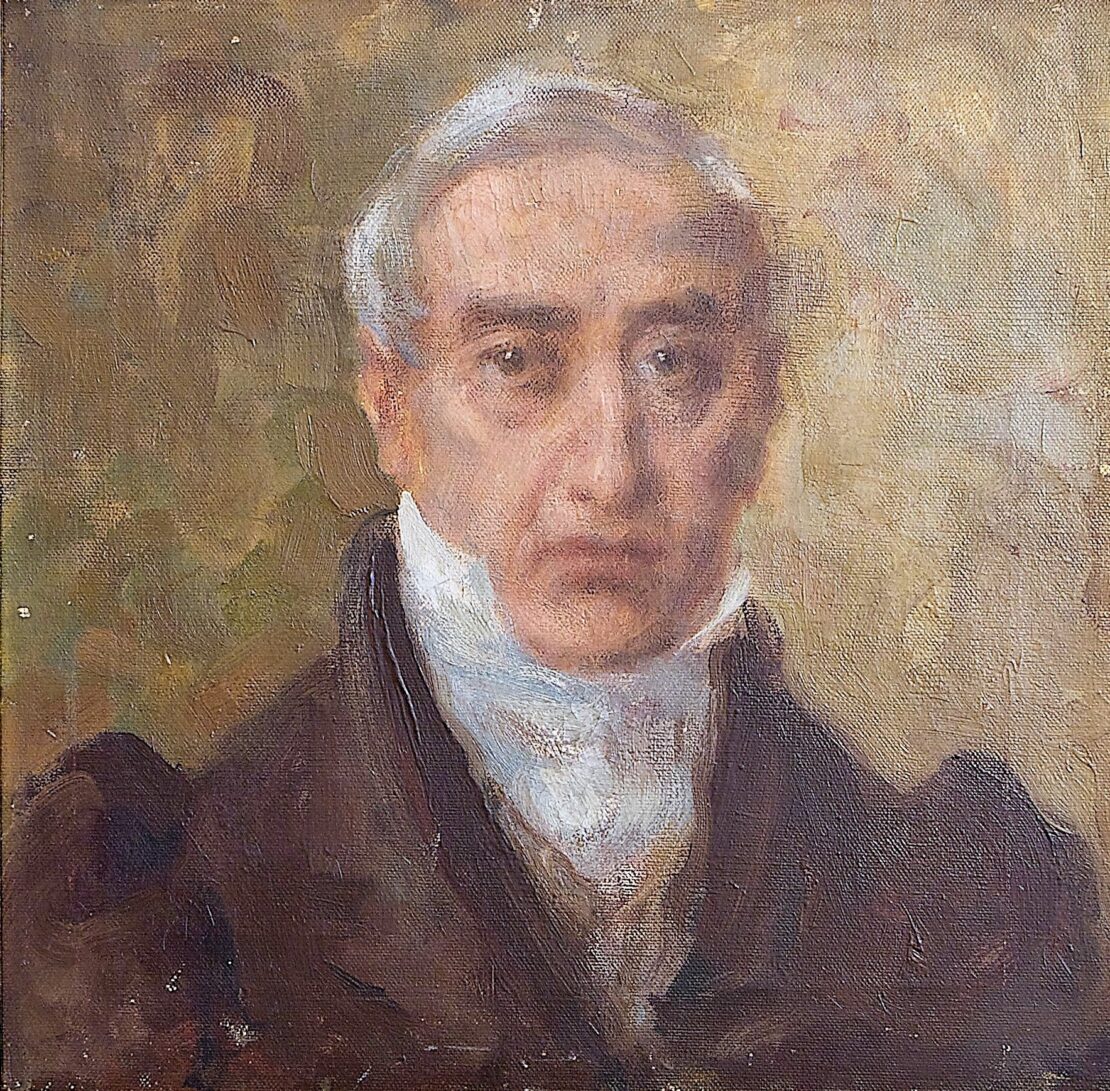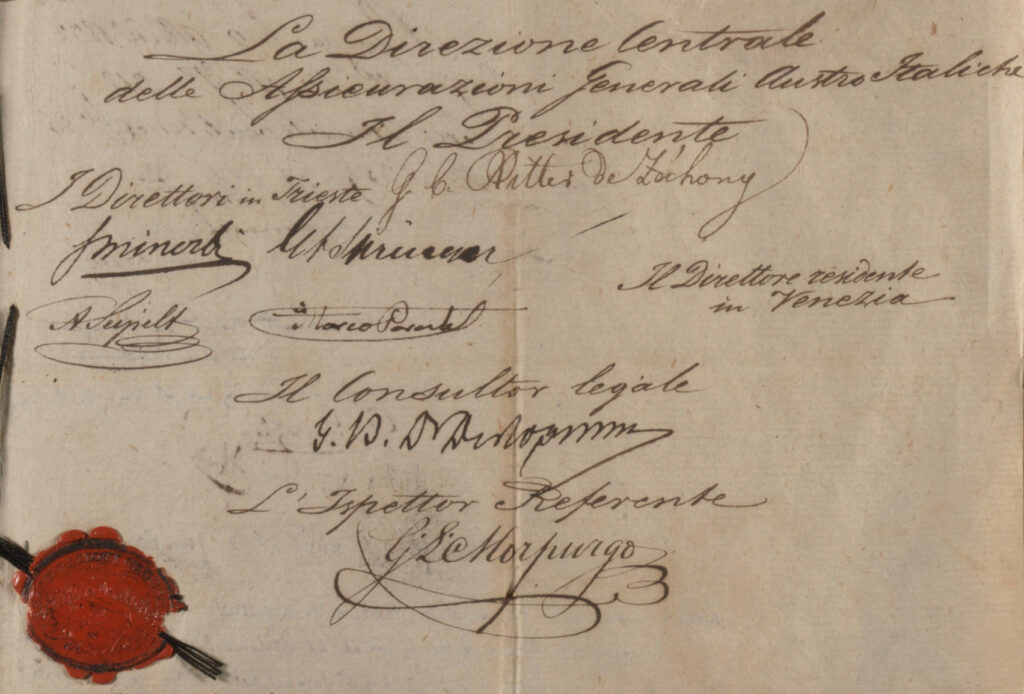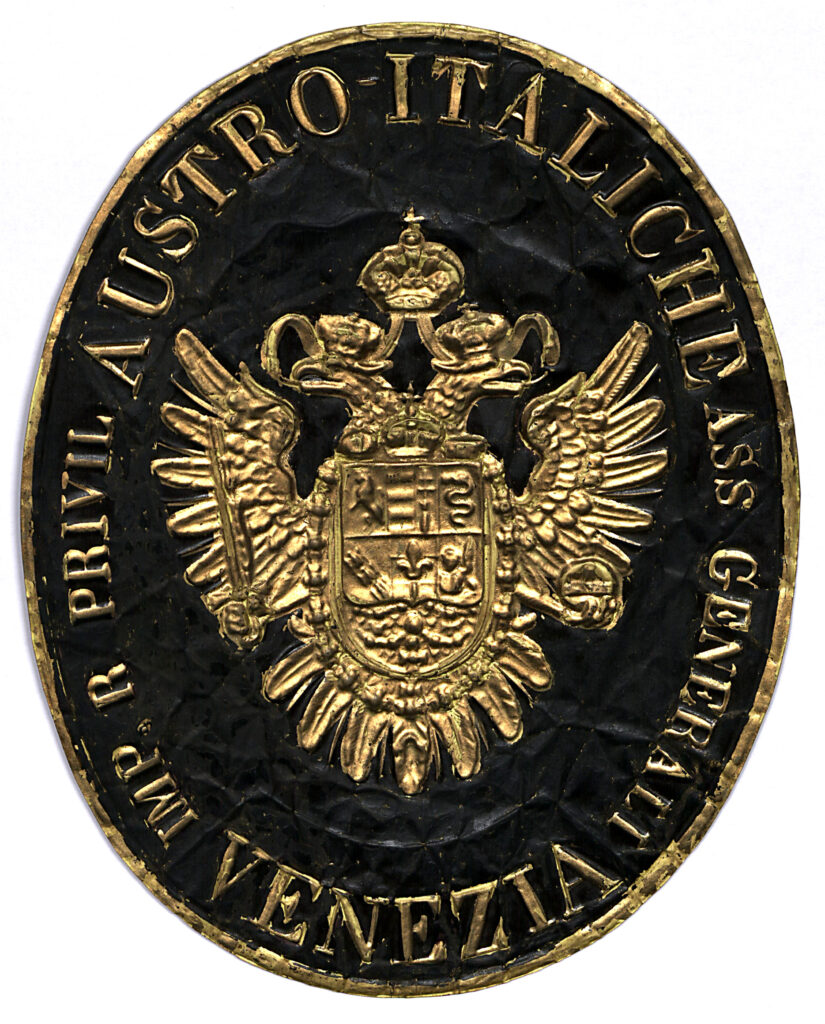Giuseppe Lazzaro Morpurgo. The heart and mind of Assicurazioni Generali Austro-Italiche
27 January 2023
The union between Giuseppe Lazzaro Morpurgo, a highly experienced insurer, and Generali marks the founding of the Company, being as he was its architect and father.
Born in Gorizia in 1759 to an old Jewish family which had moved there from Slovenia around the mid-16th century, Morpurgo settled in Trieste with his parents at a very young age.
Over the 18th and 19th centuries, Trieste had become one of the most important hubs of commerce in the Habsburg Empire after being granted the status of free port in 1719 by Charles VI of Habsburg. The rapid development of the free market had created a new trading economy and a new society, founded on the civil rights and religious freedom granted to all those who came to establish themselves there in business. This trading hub also offered attractive rates for export and fast connections with the Levant and central-northern Italy, in addition to favourable customs tariffs on transport routes to the interior regions of the Empire.
It naturally followed that Morpurgo, a leading figure in the insurance industry, needed to bolster this burgeoning mercantile growth with the appropriate insurance support. At that time, there were already numerous insurance companies in Trieste, but they dealt exclusively in the field of land, river and maritime transportation. For Morpurgo, the time was ripe to take it to the next level: founding a business focused on multiple sectors including life insurance, and targeting broad markets, modelled on similar firms founded on the continent but which had yet to be established in Trieste. He firmly believed in the social function of private insurance, which operates by “combining the general good with personal interest, which is the true purpose of human activity”.
On this basis, in 1831 Assicurazioni Generali Austro-Italiche was founded, which stood out from the other insurance firms operating in Trieste for its exceptional financial power; the breadth of the organisation, with agencies spread throughout the Empire and the Italian peninsula (hence the name “Austro-Italiche”), as well as across Europe; the variety of branches (hence the use of “Generali”) and management focused on the two head offices of Trieste and Venice.
This project was also ambitious in its choice of legal form: a joint stock company. This form was new in Italy, where previously limited partnerships were most common. This form of company allowed Generali to act as a link between insurers and local investors, who recognised that profit sharing would be a relatively safe way to invest their company revenue. It is no coincidence that those appointed to the highest company positions included shareholders who had invested in the greatest number of shares, thus allowing the most experienced members in the insurance sector to take direct action in the company administration by casting their vote.
Morpurgo was immediately assigned a key role in the Company’s technical management and decision-making process as “inspector of records” or “reporting inspector”. The importance of this role was such that Morpurgo’s name was directly included in the statute, in recognition of his skill and experience in the sector. An active member of the Management and of the Board of Directors, he was also responsible for overseeing employees and for monitoring internal operations within the company.
As a testament to the activity carried out, the Generali Historical Archive preserves preparatory notes, handwritten minutes of Management meetings, reports (“referati”) of a technical and administrative nature with a particular focus on industrial activity, and a special collection of fire marks. From England, which first introduced them in the seventeenth century, the custom spread rapidly throughout the world. In the Italian peninsula, specifically in Trieste, the first company to use these plates was Azienda Assicuratrice, founded in 1822 by Morpurgo himself and then acquired by Generali.
In April 1833, for reasons unknown, Giuseppe Lazzaro Morpurgo was excluded from the top management of the very business he helped to create, although he remained in service as a “practical consultant” until his death in 1835.
More information in A. MILLO, Giuseppe Lazzaro Morpurgo, in Generali in History. Tales from the Archive. Nineteenth Century, Venice, Marsilio, 2016, pp. 58-61; S. Galasso, S. Stener, 26 December 1831. In the Beginning There Was “Assicurazioni Generali Austro-Italiche”, in Generali in History. Tales from the Archive. Nineteenth Century, Venice, Marsilio, 2016, pp. 68-75; S. Stener, The Power of Prime Numbers. Shares and Shareholders: The Geography of the Issued Capital, in Generali in History. Tales from the Archive. Nineteenth Century, Venice, Marsilio, 2016, pp. 76-82.


